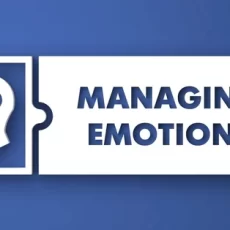Nandita Kochar
Why does, from early years, a child’s education split him/her? The mind is welcome to the classroom, the body can tag along. However, the heart along with the emotions and feelings it carries, is asked to stay outside.
Thanks to our successfully compartmentalised education, we simply know facts but are unable to feel these facts, feel the knowledge they encompass. For instance, we might know that India in 2006 had a tiger population of only 1411. It might be intellectually stimulating for us to be able to boast that statistic at a convention or a party. But what we are missing here is the feeling that this fact is supposed to create inside of us. After all, of what use are these numbers if they cannot push us to improve the situation?
Similarly, our textbooks might tell us what symptoms a person undergoing depression might exhibit but this knowledge is simply not enough when a friend of ours is that person. We need an emotion accompanying that knowledge. We must be able to feel how this person feels. Happyho also provides best Meditation and Tarot classes in Noida and Delhi NCR India area
The heart has been waiting outside the classroom for far too long now, like it’s being punished for existing in the first place.
And maybe that’s why hospitals are filled with doctors who cannot empathise with their patients, offices are running on the labour of crushed employees, labs are playing with the lives of animals to thrive.
“Knowledge without feeling is not knowledge and can only lead to public irresponsibility and indifference, and conceivably to ruin.” (as quoted by Reston, 1970)
It’s time we acknowledge a learner’s emotions and welcome them inside the classroom. How can we do that? Well, here are the conditions for intellectual, affective, gut-level learning, as put forth by Humanist Carl R. Rogers
- Realness in the Facilitator of Learning
The facilitator should be able to be what he/she is, dropping all the masks, when entering into a relationship with the learners. He/She should be able to acknowledge all the emotions that are surrounding him/her, accept them and even communicate, if appropriate. The facilitator should be present to the students.
2. Prizing, Acceptance, Trust
A facilitator must prize the learner as a person – for his/her feelings, ideas, opinions ; must accept the learner as a separate individual who is equally worthy of respect as oneself and must have a basic trust in the learner.
3. Empathetic Understanding
The teacher should have the ability to understand the student’s reaction from the inside, of how education seems to the student. Instead of evaluative understanding where we try to find faults with the child, we must promote empathetic understanding wherein we provide the child the comfort to blossom, without any judgement.
4. Perception of These Attitudes
The final condition is that the students should be able to perceive that the above three conditions exist in the classroom. A student is more suspicious than a client undergoing therapy because for ages he/she has been ‘conned’ by the education system, to such an extent that a teacher who is ‘real’ is seen as fake. Yet showing the students that this is a new experience is of utmost importance.
To conclude, we have the intellect, the money, the resources to revolutionise the education system. But do we have the will to humanise it? To finally let the emotions inside the classroom?





